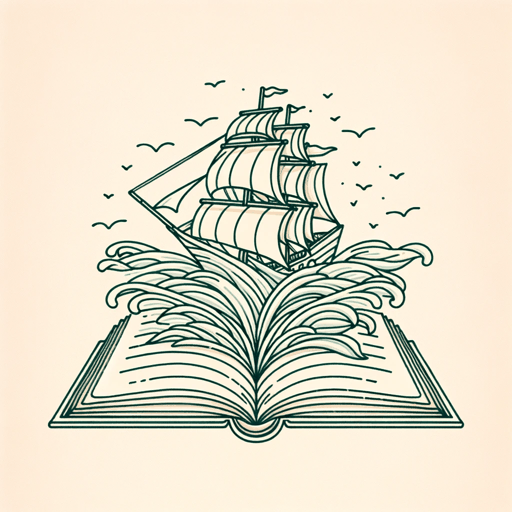18 pages • 36 minutes read
Emily DickinsonThere is no Frigate like a Book
Fiction | Poem | Adult | Published in 1866A modern alternative to SparkNotes and CliffsNotes, SuperSummary offers high-quality Study Guides with detailed chapter summaries and analysis of major themes, characters, and more.
Poem Analysis
Analysis: “There is no Frigate like a Book”
Emily Dickinson’s “There is no Frigate like a Book” highlights a reader’s ability to travel through the study of literature. Dickinson’s speaker presents literature as capable of more than allowing their reader to travel topographically. Starting in Dickinson’s contemporary period, the poem’s imagery progresses backward in time. The speaker suggests that poetry—and literature more generally—allows one to travel historically and to engage with the fundamental questions of the “Human Soul” (Line 8).
Dickinson’s poem is an extended metaphor that emphasizes literature’s ability to transport its reader (See: Literary Devices). Dickinson’s speaker uses literal vehicles as the vehicles for their metaphors. First, they compare a “[b]ook” to a “[f]rigate” (Line 1), a full-rigged warship notable for its agility. The speaker proceeds to compare “a [p]age” to a “[c]ourser” (Line 3) or horse, and literature more generally to a “[c]hariot” (Line 7). Each of these vehicles stand among the fastest in their category, especially compared to more traditional and common-place forms of travel such as walking or taking a coach. By comparing literature to these vehicles, Dickinson’s speaker positions reading among the most capable modes of topographical transportation.
The order in which the speaker chooses to make these comparisons suggests a secondary movement to the past.
Related Titles
By Emily Dickinson

A Bird, came down the Walk
Emily Dickinson

A Clock stopped—
Emily Dickinson

A narrow Fellow in the Grass (1096)
Emily Dickinson

Because I Could Not Stop for Death
Emily Dickinson

"Faith" is a fine invention
Emily Dickinson

Fame Is a Fickle Food (1702)
Emily Dickinson

Hope is a strange invention
Emily Dickinson

"Hope" Is the Thing with Feathers
Emily Dickinson

I Can Wade Grief
Emily Dickinson

I Felt a Cleaving in my Mind
Emily Dickinson

I Felt a Funeral, in My Brain
Emily Dickinson

If I Can Stop One Heart from Breaking
Emily Dickinson

If I should die
Emily Dickinson

If you were coming in the fall
Emily Dickinson

I heard a Fly buzz — when I died
Emily Dickinson

I'm Nobody! Who Are You?
Emily Dickinson

Much Madness is divinest Sense—
Emily Dickinson

Success Is Counted Sweetest
Emily Dickinson

Tell all the truth but tell it slant
Emily Dickinson

The Only News I Know
Emily Dickinson

